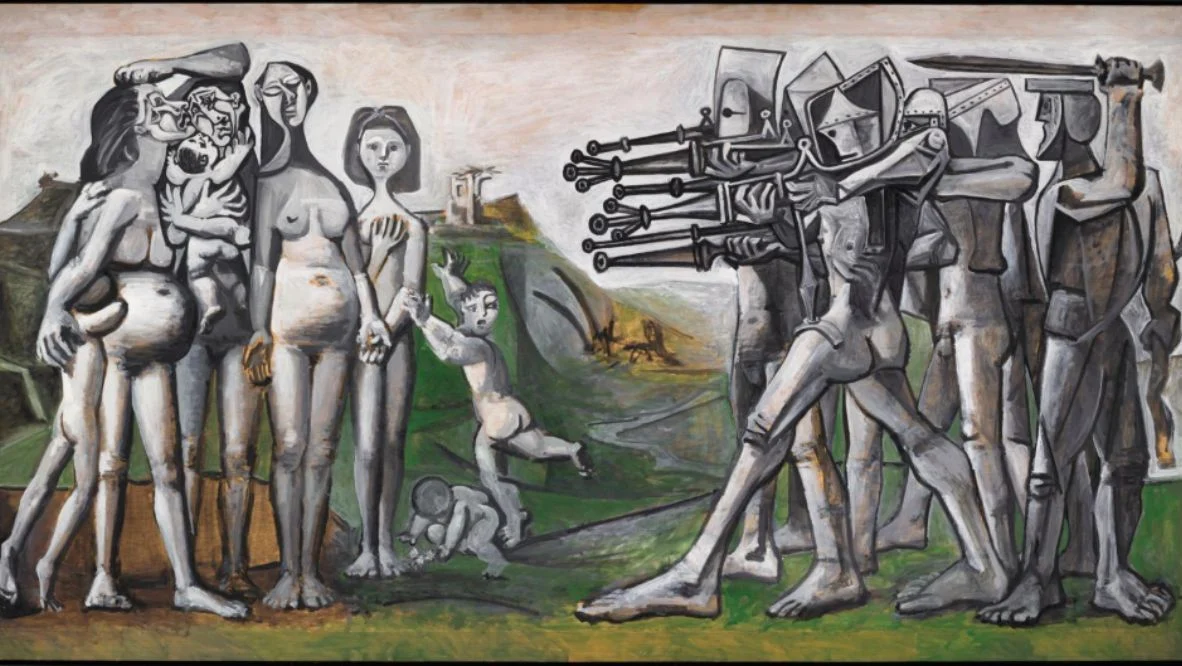Grafik! Five Centuries of German and Austrian Graphics
These Montreal Museum of Fine Arts exhibitions were available online in recent months, but can be viewed in person as of 12 February 2021.
It’s not every day you get to stand in front of a leaf from the 1455 Gutenberg Bible. And that’s just one item among the 90-plus on display in Grafik! Five Centuries of German and Austrian Graphics, a printmaking show of stunning historical and stylistic range. It includes a who’s who of seminal artists, from Renaissance giant Albrecht Dürer to the iconic Viennese secessionist Gustav Klimt.
Fans of German expressionism and the Bauhaus school will be especially well served; these genres have never stopped looking modern in the century since their heyday, and they are represented by Emil Nolde, Otto Dix, Wassily Kandinsky and others. Asked to choose two must-sees from a show of must-sees, curator Hilliard Goldfarb picked Dürer’s The Beast With Two Horns, from the series The Apocalypse (1496-1497), and Erich Heckel’s Männerbildnis (Portrait of a Man; 1919).

GRAFIK! Five Centuries of German and Austrian Graphics presents about 90 works, including several remarkable works on paper, that embrace over 550 years of Germanic creativity. Several of these works on paper have never previously been exhibited, while others have not been shown for some years. Highly important recent Museum acquisitions from all periods are also included.
Curated by Hilliard T. Goldfarb, Senior Curator – Collections, and Curator of Old Masters, MMFA, GRAFIK! is exceptional in its chronological range as well as in the breadth, significance and quality of the print impressions and drawings. The exhibition provides an unprecedented opportunity for Museum visitors to trace the technical and cultural history, of the Germanic and later Austrian graphic arts.
GRAFIK! presents a selection of works ranging from superb 15th-century engravings by Israhel van Meckenem the Younger and Martin Schongauer to masterpieces of woodcut and engraving by the towering early 16th-century master Albrecht Dürer – a dozen prints encompassing the breadth of his career – and a wide variety of works by other printmakers of that time. Also displayed are drawings by the German 18th- and 19th century artists Jakob Philipp Hackert, Carl Wilhelm Kolbe the Elder and Julius Schnorr von Carolsfeld, as well as drawings associated with later Viennese sensibilities by Hans Makart, Gustav Klimt (including studies of Adele Bloch-Bauer, his celebrated Woman in Gold) and Egon Schiele.

Moreover, the exhibition features a broad diversity of remarkable prints, some quite rare, by German Expressionist and Bauhaus artists, among them Emil Nolde, Ernst Ludwig Kirchner, Erich Heckel, Otto Dix, Max Beckmann, Max Pechstein, Karl Schmidt-Rottluff, Otto Mueller, George Grosz, Franz Marc and Wassily Kandinsky. Among the works on view from the traumatic period in German history between the two World Wars are exciting new Museum acquisitions – a major, splendidly detailed drawing by Otto Dix for his portrait of Hugo Simons (also in the Museum’s collection), originally presented by the artist to his friend, the sitter, and an iconic woodcut, a self-portrait, by Erich Heckel. The exhibition concludes with a 1980 landscape print by Georg Baselitz.
Further augmenting the presentation are rare and profoundly influential examples of early German printing and illustrated book publishing, including a leaf from the Gutenberg Bible (1455), the first European publication created with movable type, and the illustrious Nuremberg Chronicle (1493) with woodcut illustrations by Michael Wolgemut, the master of the young Dürer. Also on display is a copy of the original, Frankfurt edition of Sir William Harvey’s 1628 illustrated book on the circulation of blood.
The exhibition can be viewed until July 3, 2021.
1380 Sherbrooke Street West Montreal, Quebec H3G 1J5
Nearby hotels:

